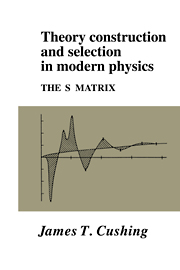Book contents
- Frontmatter
- Contents
- Preface
- Acknowledgments
- 1 Introduction and background
- 2 Origin of the S matrix: Heisenberg's program as a background to dispersion theory
- 3 Dispersion relations
- 4 Another route to a theory based on analytic reaction amplitudes
- 5 The analytic S matrix
- 6 The bootstrap and Regge poles
- 7 An autonomous S-matrix program
- 8 The duality program
- 9 ‘Data’ for a methodological study
- 10 Methodological lessons
- Appendix
- Notes
- References
- Glossary of technical terms (from physics and from philosophy)
- Some key figures and their positions
- Index
6 - The bootstrap and Regge poles
Published online by Cambridge University Press: 05 June 2012
- Frontmatter
- Contents
- Preface
- Acknowledgments
- 1 Introduction and background
- 2 Origin of the S matrix: Heisenberg's program as a background to dispersion theory
- 3 Dispersion relations
- 4 Another route to a theory based on analytic reaction amplitudes
- 5 The analytic S matrix
- 6 The bootstrap and Regge poles
- 7 An autonomous S-matrix program
- 8 The duality program
- 9 ‘Data’ for a methodological study
- 10 Methodological lessons
- Appendix
- Notes
- References
- Glossary of technical terms (from physics and from philosophy)
- Some key figures and their positions
- Index
Summary
For those who view the S-matrix program as being independent of (and perhaps even opposed to) field theory, we have now arrived at what they might take to be the beginning of the S-matrix program. However, considering the field theory roots of nearly all the successful applications of the dispersion-theory and analytic S-matrix program, as well as the failure to date of the more revisionary form of S-matrix theory to attain a coherent abstract formulation and a large base of empirical confirmation, we do not use the term ‘S-matrix program’ as anything necessarily antithetical to field theory. Both field theory and S-matrix theory have been enormously fruitful, often in different areas, and we can consider them as complementary approaches. We shall see, though, that the developments of this chapter did lead to a proposal for a completely independent S-matrix theory, one that has not been refuted. That autonomous S-matrix program is the subject of the next chapter.
In this chapter we focus on the bootstrap, both its origin and some details of its applications. Pomeranchuk had given various arguments – some based on a simple physical model of scattering processes, others based on apparently reasonable asymptotic properties of an analytic scattering amplitude – that led to certain expectations about the asymptotic behavior of total cross sections and about relations among total cross sections for different processes. In particular, there were what appeared to be reasonably convincing theoretical arguments for the belief that total cross sections should approach constant values at high energy (as opposed to vanishing or continuing to increase indefinitely).
- Type
- Chapter
- Information
- Theory Construction and Selection in Modern PhysicsThe S Matrix, pp. 134 - 166Publisher: Cambridge University PressPrint publication year: 1990



